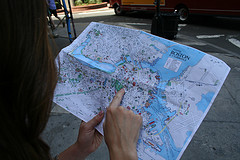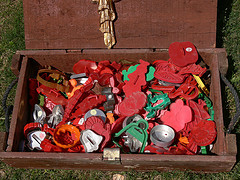10 Online Photography Portfolio No-No’s
Online portfolios can be an important tool for photographers wanting to share portions of their work with an audience. When done right, they portray your work in a highly professional and concise manner. When done wrong, you just look like a hack. I wrote about this topic some time ago, but I'd like to cover it again.
I should also state right up front that I don't have a dedicated online photography portfolio in the traditional sense. Perhaps one of these days when I take some decent photos I'll put one together. But I've had to look through many other portfolios and I've seen a fair amount in passing.
What I can say from those I've seen is that some of the same mistakes and nuisances are common to a good number of them. Now, it's rare to find a portfolio site that exhibits all 10 offenses listed below, but it's also rare to find one that exhibits none. (also keep in mind that some of these things are only my personal preferences and opinions)
If you have an online photography portfolio (or, more likely, a collection of portfolios housed under one website), here are a few things worth paying attention to if you want the user experience to be a good one.
1. SPLASH PAGE
Do you really need a whole page dedicated to your name or the word “Enter”? I probably know your name if I'm visiting the home page, and you ought to have your name present somewhere on every other page in your portfolio. Don't force me to find your frilly little entrance link on the splash page, just get straight to the point.
2. MUSIC
I don't encounter this one much anymore, but it's still out there. Seriously people, don't put music on your photography portfolio. It's not adding to the mood or ambiance, it's just annoying. I usually have music going on my computer and nothing pisses me off more than some website with music or audio ads messing with my tunes.
3. DIFFICULT TO NAVIGATE
A photography portfolio should be quick and easy for the viewer. Navigation is a key component here — make it as simple as possible for me to see your photos. If I spend too much time digging for the images, I'll just leave.
4. PHOTO SIZE
Most photographers are pretty good about sizing their photos appropriately, but I do see some extremes from time to time. Images that are too small (< 600px) don't show enough detail to be interesting to the viewer. Images that are too big (> 1200px) won't fit on some screens and you lose a lot of impact when you have to scroll. I find that somewhere in the neighborhood of 800-900px on the long edge is a good compromise: large enough to be viewed, small enough to load quickly.
5. PHOTO QUANTITY
A portfolio isn't a dumping ground for every photo you've taken in the last 10 years — it's supposed to be a small collection of your best work that represents you as a photographer. Each portfolio should contain 10-20 images on a specific topic or subject (maybe 30 or 40 depending on the subject and how they're presented). Any more and I'm bored. Any less and I'm unimpressed.
6. PHOTO DIVERSITY
While photos in a specific portfolio should be on topic, they should also show differences in subjects, locations, styles, etc. If your portfolio for “fashion photography” has images from only one studio session, it just looks like you have almost zero experience. Show some diversity, and show that you've done this more than once.
7. PHOTO ORGANIZATION
How you organize your photos and portfolios is totally up to you — the important thing is that they're organized. Unless you shoot only one specific subject/topic, you shouldn't be presenting every photo on your site in the same place. Break it up and make it easier for your viewers to understand what they're looking at. Even if it's something as simple as “Landscapes”, “Plants”, “Animals”, “Waterfalls”, “Portraits”, “Weddings”, etc. Portfolios should be topical and concise.
8. ALL FLASH, NO INFO
Flash sites don't bother me and I'm not going to start a flame war on the subject. But if you use Flash for your entire site, have the decency to also place a title or image number on the same screen as the photo (since most flash sites don't have a separate url for each image). It's so frustrating to contact somebody and say “I'm interested in that image of the staircase. If you click on the menu item that says “patterns”, then click on the other menu items that says “3”, then click the right arrow 14 times. That's the one I want.” It's a lot easier to grab a url from a non-flash site or just state the title of the image.
9. STANDARD TEMPLATE
This isn't a huge deal, but it's something to think about if you have some spare time. For sites that use templates or standard designs, a little customization goes a long way. The cookie-cutter design can sometimes send the message that you're not serious about your work.
10. NO NAME, NO EMAIL
Similar to #8… if you don't want people to contact you, then don't put your name or email on the website. Contact forms are usually fine too, but some people prefer to send an email so they have some record of what they're inquiring about. This is not a joke, I've actually seen portfolios that had no way to contact the photographer.
ANYTHING ELSE?
What other things with online portfolios bother you? What really gets under your skin from a viewer perspective? Any good examples of portfolios done right?




